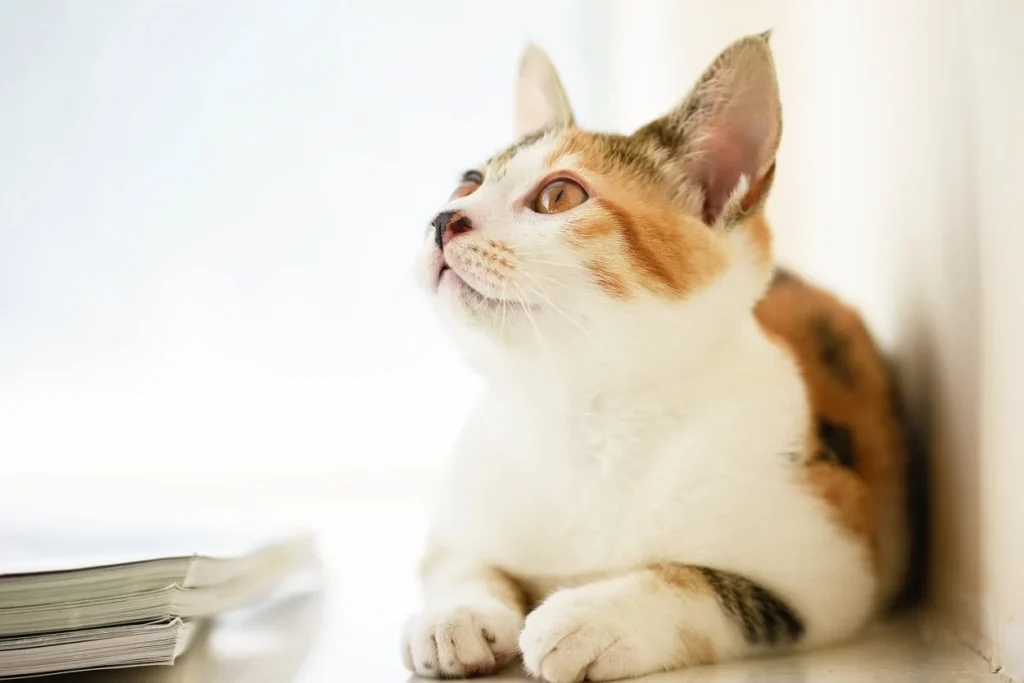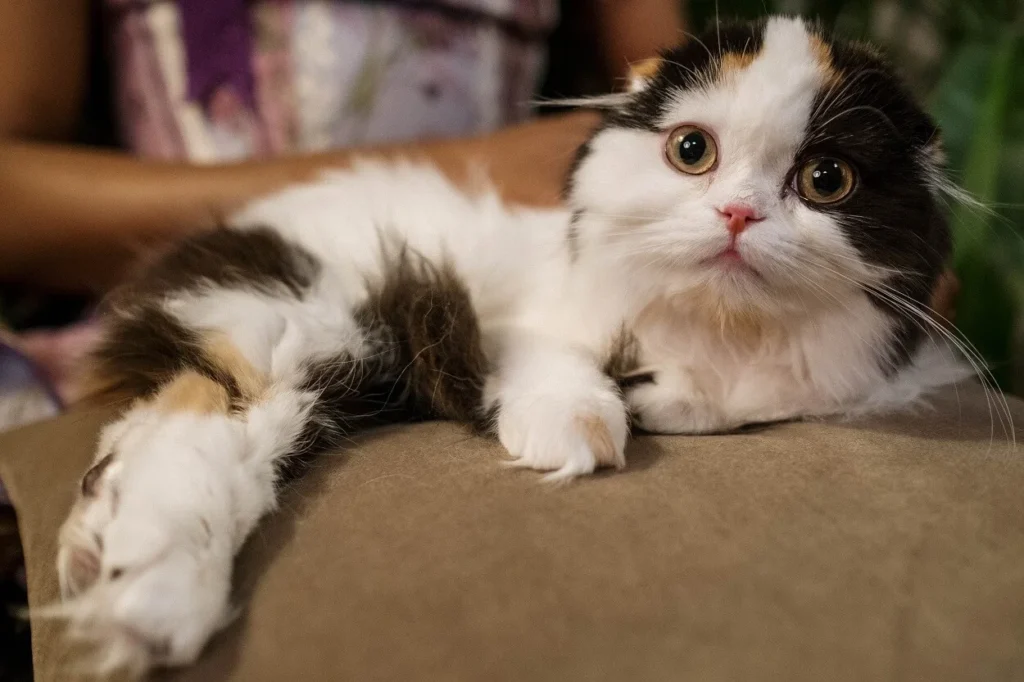That blissful purr paired with rhythmic paws pressing in and out on your lap – a signature move fondly dubbed “making biscuits.” Kneading blankets, clothing, or owners functions as a self-soothing calming mechanism for many cats.
Discover reasons for obsessive kneading in cats. when to seek veterinary intervention, and how attentive care can help your kneady kitty overcome this behavior.
But while occasional kneading proves perfectly normal, nonstop obsessive kneading cats require deeper attention to address root causes behind the fixation.
Most domesticated cats retain an innate biological drive to periodically knead soft furnishings, surfaces, or owners’ bodies with alternating front paw motions owing to innate associations tracing back to kittenhood bonding behaviors.
When expressed in short, constrained bursts, paw-kneading cats offers wellness benefits related to affective communication, self-soothing stress relief, and social bonding.
However, obsessive biscuit-making exceeding reasonable durations often indicates underlying medical or environmental causes requiring veterinary intervention and owner lifestyle adjustments for optimal cat health and wellbeing.
Let’s explore the difference between typical feline biscuit-making behaviors, signs of problematic obsessive kneading cats, possible reasons it develops, and constructive solutions to ease endless kneading.
Reasons For Obsessive Kneading in Cats

At reasonable situational frequencies and durations, most cats instinctively knead plush objects, owner laps, or textured blankets they associate with warmth and comfort for meaningful reasons including:
Suckling Associations
As nursing infant felines, kittens quickly learn to vigorously massage mother cat mammary glands to stimulate nourishing milk production while suckling. This kneading ritual imprints subconscious positive associations between vigorously working front paws and experiencing safety, comfort, caretaking, and parental bonding while feeding.
As adults, replicating kneading motions likely stimulates memories of infantile comfort tied to their mothers’ care.
Self-Soothing Habit
Beyond maternal associations, cats often compulsively demonstrate kneading mannerisms while alone to self-soothe emotional unrest or perceived environmental threats.
The physically rhythmic motions release endorphins inducing psychosomatic calming effects that relax the nervous system, not unlike a human hugging herself tightly or jiggling legs during stressful situations.
Essentially cats instigate innate “making biscuits” motions to stimulate their own inborn natural tranquilizing mechanisms.
Affectionate Communication
Particularly affectionate cats will enthusiastically partake in kneading cats behaviors while sitting on trusted owners’ laps as an intentional non-verbal social signal communicating profound contentment, perceived security, and emotionally bonded intimacy in that moment.
It serves as a meaningful display reinforcing mutual affective trust when cats begin resonantly purring and properly kneading favored caring humans. These affectionate bonding bursts further enrich positive interpersonal connections through demonstrative tactile interactions.
So in summary, most properly constrained feline kneading episodes ultimately link back to beneficial behavioral associations involving early developmental nurturing instincts, stress-reducing emotional coping outlets, or demonstrations of interpersonal attachment bonding, respectively.
When expressed moderately, kneading cats motions typically indicate normal psychosomatic system functioning yielding neutral to positive health outcomes.
Signs of Problematic Obsessive Kneading
However, obsessive excessive kneading exceeds those adaptive survival functions when cats compulsively over-knead regardless of contextual appropriateness or location convenience, straining bodily resources.
Problematic obsessive biscuit-making incorporates forcefully applied, never-ending paw motions interfering with basic functioning. Specific warning signs include:
Excessive Duration or Frequency
Cat kneads virtually every waking minute, unable to independently self-limit reasonable episodic spurts without external interventions. Owners often must physically distract themselves to ever interrupt nonstop marathon kneading bouts.
Overt Paw Discomfort or Damage
Chronic overuse leads to nail damage, stressed joint ligaments, muscular inflammation, front limb arthritis, limping, and paw pad cracking/bleeding from extremely forceful, incessant pawing motions.
Impeding Normal Activities
All-consuming incessant kneading cats ultimately overrides natural impulse control circuits in the brain. Constant obsessive biscuit-making begins physically obstructing essential normative behaviors like adequate sleep, hydration, feeding, grooming, litter box use, or social play engagement due to the unmanageable strength of instincts driving endless kneading motions.
When cats chronically demonstrate these obsessive kneading symptoms, their biscuit-making compulsions have clearly exceeded neutral survival functions to now threaten long-term physical health and daily living functionality.
In such cases, appropriately identifying root causes of obsessive problems allows access to proper medical and environmental remediation management approaches.
Root Causes Driving Obsessive Kneading Cats Behaviors
The original underlying sources fueling obsessive kneading compulsions in cats generally link back to suboptimal environmental living conditions, unmet needs, or psychological anxiety issues including:
Anxiety & Stress Triggers
Excessive biscuit-making represents only one possible symptom of stressed cats struggling to internally process perceived home environment threats, sudden disruptive lifestyle changes, territorial disputes, family conflict introducing chaos, or existential emotional trauma. Here obsessive-compulsive kneading morphs into a maladaptive neurotic coping mechanism for Salon emotional dysregulation.
Premature Weaning Issues
If abruptly separated from mothers too early (under 12 weeks old), kittens may fail to properly develop innate self-regulating neural circuitry teaching reasonable kneading cats habit limitations. Sudden maternal rejection can short-circuit forming healthy inhibitions against excessive biscuit-making later on.
Inadequate Stimulation
Attention-deprived cats endlessly knead blankets or furniture while feeling bored, lonely, lethargic, and seriously under-entertained. Lack of engaging playtime interactions, unpredictable daily routines, insufficient cat trees/toys, and missing environmental exploration opportunities fuels restlessness emerging as obsessive kneading from inadequate enrichment.
Multifaceted Treatment Recommendations

To resolve chronic obsessive feline kneading caused by multiple interacting biopsychosocial factors, vets recommend tailored treatment plans incorporating both medical and lifestyle components that helps to control obsessive kneading in cats. It includes:
Medical Exams Checking for Pain Sources
Physical inspect joint health, ensure adequate pain control, screen for hidden illness, check for intact neurological sensory functioning that may miscommunicate pleasure once injuries/degeneration begins painfully overstimulating paw nerve fibers.
Increasing Daily Activity Enrichment
Boost aerobic playtime, engaged interaction opportunities, puzzle feeders, new toys rotated through, cat trees/perches allowing window watching could better occupy minds vulnerable to obsessive thinking patterns when bored.
Soothing Anxieties Through Training
Counter Condition excessive kneading responses using clicker training to decrease associated stressors; teach alternative calming outlets. Consider anti-anxiety/OCD medication if compulsions continue disrupting normal functioning.
Summary
With vigilant synchronization of caring veterinary health expertise paired attentive pet parent lifestyle adjustments accounting for environmental, physical and emotional wellbeing, obsessive kneading cats can overcome adversity through determination. There is hope for every obsessively kneady kitty!
With attentive care from pet parents coupled with expertise from veterinary professionals, cats prone to obsessive biscuit-making can overcome the compulsion and redirect their energy toward healthy expressions of natural behavior instead. There’s hope for every kneady kitty!

